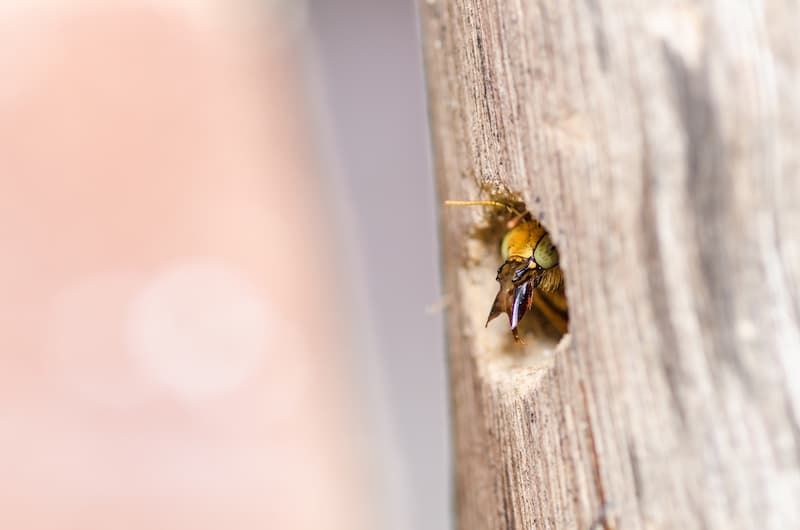The black and yellow spots on yellow jackets make them easy to spot. They are a type of wasp that is most active in the summer. Although yellow jackets are very important to the environment because they keep other insects in check, they can be a bother when they build their nests near where people are working or playing. Putting safety first when taking down a yellow jacket nest should be the main goal. This guide will talk about how to safely get rid of yellow jacket nests.
- Figuring out what kind of wasps are in the nest is the first safe thing that needs to be done when taking them down. Yellowjackets are easy to spot because they are black and yellow. When they are not at home, they are less likely to sting. You need to be sure you’re working with yellow jackets and not honeybees or bumblebees, which are good pollinators and usually not as mean.
- Time is important: plan to get rid of the yellow jackets in the late evening or early morning, when they are less likely to be moving around and more likely to be in their nest. If you try to get rid of the nest during the day, when the workers are out searching for food, you may get more stings and see them act aggressively.
- Protective Gear: Make sure you’re wearing protective gear before you go near a yellowjacket nest. A beekeeping suit or thick, long-sleeved clothes, gloves, and a hat with a hood should be part of this. Also, you must wear shoes with closed toes and socks that can be tucked into your pants.
- Use the Right Tools: Pick out the tools that are best for the job. You will need a spray made just for wasps and hornets so that you can safely aim at the nest. If you want to keep the yellowjackets from being aggressive, don’t use a normal bug spray.
- Figure out how to get out of the nest. Before you go near it, make sure you know how to get out. After you treat the nest, be ready to leave the area quickly and quietly. You should not run because that can make the yellowjackets chase you.
- When you get close to the nest, be cool and slow at dusk or dawn, when the yellow jackets are not as active. Making sure you can see the opening to the nest is very important.
- Stay cool: It’s very important to stay cool during this process. The yellowjackets can get scared by sudden moves or loud noises. When you get close to the nest, be quiet and don’t do anything fast or forceful.
- Be Accurate: Aim for the door to the nest when you use the wasp and hornet spray. Make sure the spray goes all the way into the nest when you soak the opening. To stay safe, you need to use a spray with a long-range stream.
- Wait and Watch: Once you’ve treated the nest, take a step back and watch the yellowjackets for a while. If the nest stops being used and you don’t see any yellowjackets coming out, it’s usually safe to remove the nest.
- Taking down the nest: Once you’re sure the nest isn’t being used anymore, you can take it down. Put the nest inside a plastic bag or container and make sure the lid is tight. After that, put it in a trash bag, tie it up tight, and throw it away.
- Clean Up: Once the nest is gone, the area should be cleaned well to get rid of any yellowjacket evidence that may still be there. This helps keep wasps from coming back to the same spot.
- Get Help from a Professional: If you’re not sure how to get rid of a yellowjacket nest or are worried about doing it wrong, it’s always best to hire a pest control service. They have the skills and safety gear to safely take down even the most difficult nests.
Finally, getting rid of yellow jacket nests needs to be done carefully and safely. The most important things for a safe and efficient nest removal process are correct identification, protective gear, the right tools, and the right time. If you’re not sure how to deal with yellow jackets or are worried about doing it, it’s best to get help from pest control experts who can do the job safely and correctly. When working with stinging bugs like yellow jackets, you should always put your safety first.
Wasp Control Newmarket, We understand that wasps serve a vital role in our ecosystem as beneficial and visually striking insects. They contribute to pollination, control pests, and typically carry out their tasks without causing disruptions to humans.
